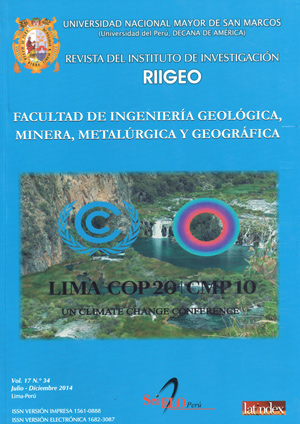Sensitization in the management of solid waste to neighboring from FONAVI and ENACE , in the city of Puerto Maldonado, Madre de Dios region
DOI:
https://doi.org/10.15381/iigeo.v17i34.11388Keywords:
Sensitization, solid waste, PET, ENACE, FONAVIAbstract
The sensitization study population and production evaluation of PET was performed from January to March 2010 in the city of Puerto Maldonado in the areas of FONAVI and ENACE, both are inhabited by people of lower-middle stratum. Beneficiaries were selected and evaluated prior knowledge about the concepts of segregating, organic and inorganic waste through the use of surveys at the beginning and end of the project. I give them a red bag for separating plastic bottles, which were collected on weekends for storage and weighing. Concepts raised FONAVI neighbors learned more about the concept of segregating but not increase the number of people who knew about organic and inorganic waste. On the other hand, neighbors ENACE who knew the word segregation decreased by 1% probably because they were more concerned in learning the concepts of organic and inorganic waste as initially I was recording 62% of residents who knew the concept, then increased to 77 %. Regarding the PET not I collect the expected amount due to natural phenomena, miners’ strike, mechanical drive pickup.Downloads
Published
Issue
Section
License
Copyright (c) 2014 Lucy Mamani

This work is licensed under a Creative Commons Attribution-NonCommercial-ShareAlike 4.0 International License.
AUTHORS RETAIN THEIR RIGHTS:
a. Authors retain their trade mark rights and patent, and also on any process or procedure described in the article.
b. Authors retain their right to share, copy, distribute, perform and publicly communicate their article (eg, to place their article in an institutional repository or publish it in a book), with an acknowledgment of its initial publication in the Rev. Inst. investig. Fac. minas metal cienc. geogr.
c. Authors retain theirs right to make a subsequent publication of their work, to use the article or any part thereof (eg a compilation of his papers, lecture notes, thesis, or a book), always indicating the source of publication (the originator of the work, journal, volume, number and date).
























